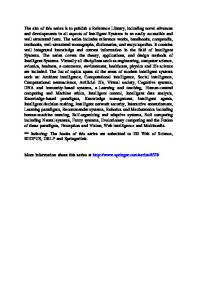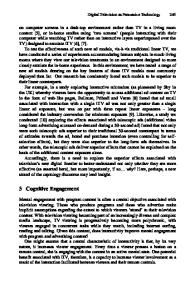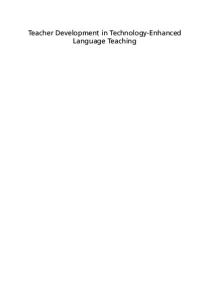Teaching with digital technology
- PDF / 869,712 Bytes
- 20 Pages / 595.276 x 790.866 pts Page_size
- 30 Downloads / 335 Views
ISSUE 2020 - 7
Teaching with digital technology Alison Clark‑Wilson1 · Ornella Robutti2 · Mike Thomas3 Accepted: 5 October 2020 © The Author(s) 2020
Abstract In this survey paper, we describe the state of the field of research on teaching mathematics with technology with an emphasis on the secondary school phase. We synthesize themes, questions, results and perspectives emphasized in the articles that appear in this issue alongside the relevant foundations of these ideas within the key journal articles, handbooks and conference papers. Our aim is to give an overview of the field that provides opportunities for readers to gain deeper insights into theoretical, methodological, practical and societal challenges that concern teaching mathematics with technology in its broadest sense. Although this collection of articles was developed prior to the global coronavirus pandemic, we have taken the opportunity to survey the contributing authors to provide some country perspectives on the impact the pandemic has had on mathematics teaching with technology in the period January–July 2020. We conclude the survey paper by identifying some areas for future research in this increasingly relevant topic. Keywords Tools · Resources · Technology · Teachers · Teaching · Mathematics · Dynamic · Instrumental approach · Handheld technology · Communities of teachers · Collaboration
1 Introduction When computers first appeared in school mathematics classes in the 1970s the emphasis was, rightly, on how they might be used to improve student learning. Early surveys, such as Schoenfeld (1988), show a variety of ways that this was attempted, ranging from drill and practice and programming to the design and use of software programs employing dynamic representations and simulations that addressed conceptual learning (Kaput, 1987). In more recent years there has been a subtle shift of emphasis on how to improve learning. This has been informed by research, such as the statistical meta-analysis of Hattie (2003), which has found clear evidence that of all the factors influencing student activity it is the teacher who most influences learning. This has been recognized by others, such as Kieran, Krainer and Shaughnessy (2013, p. 365) who stated “it is the teacher who can affect to the greatest extent the achievement of one * Alison Clark‑Wilson a.clark‑[email protected] 1
UCL Institute of Education, University College London, London, UK
2
Università di Torino, Torino, Italy
3
Auckland University, Auckland, New Zealand
of the main purposes of the research enterprise, that is, the improvement of students’ learning of mathematics”. In addition, in the last two decades the range of digital technology available has expanded considerably and their facilities and power have also greatly increased. In the light of these changes, the research focus of many has moved from how computers can help with learning to how teachers can make practical use of different types of digital technology to provide students with activities that will enhance t
Data Loading...











